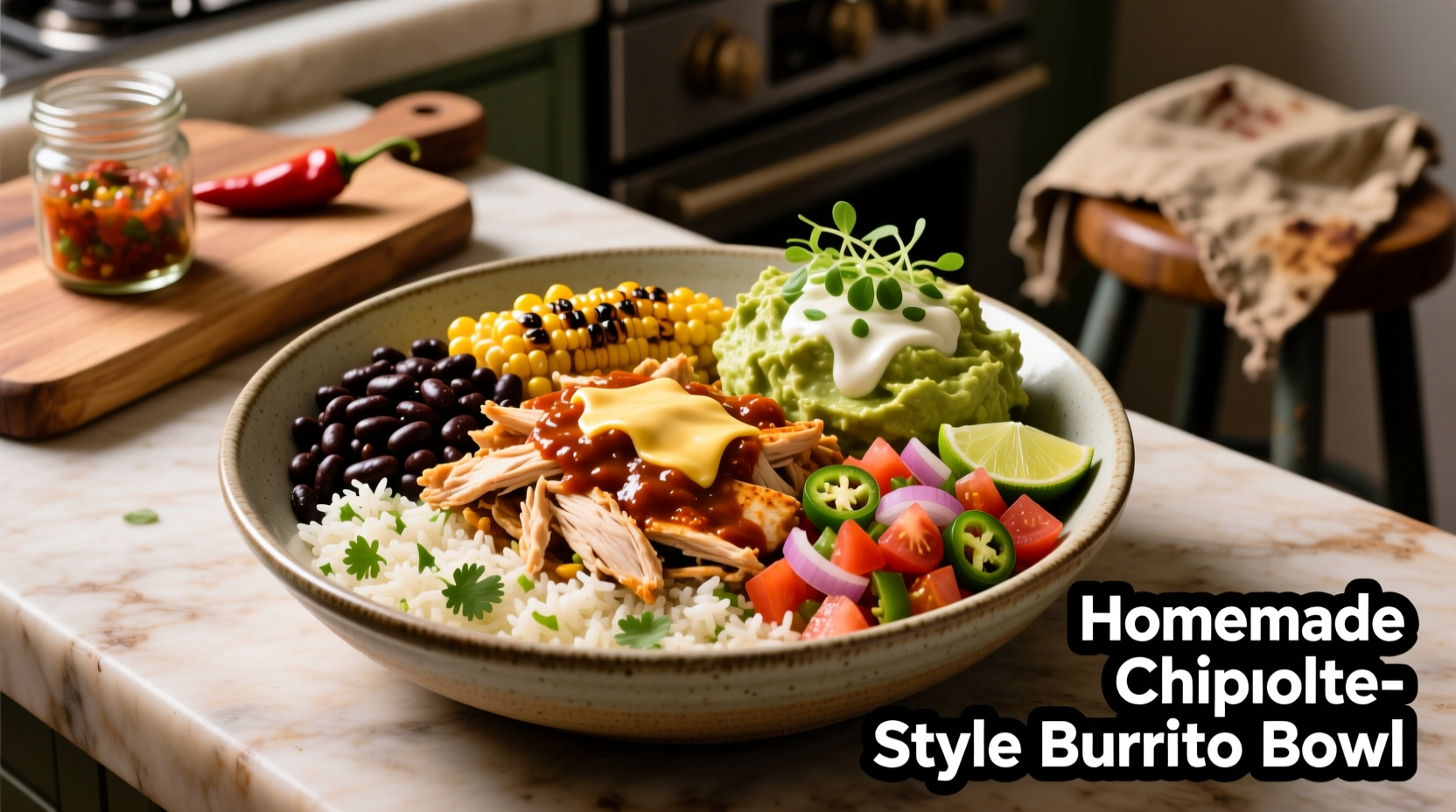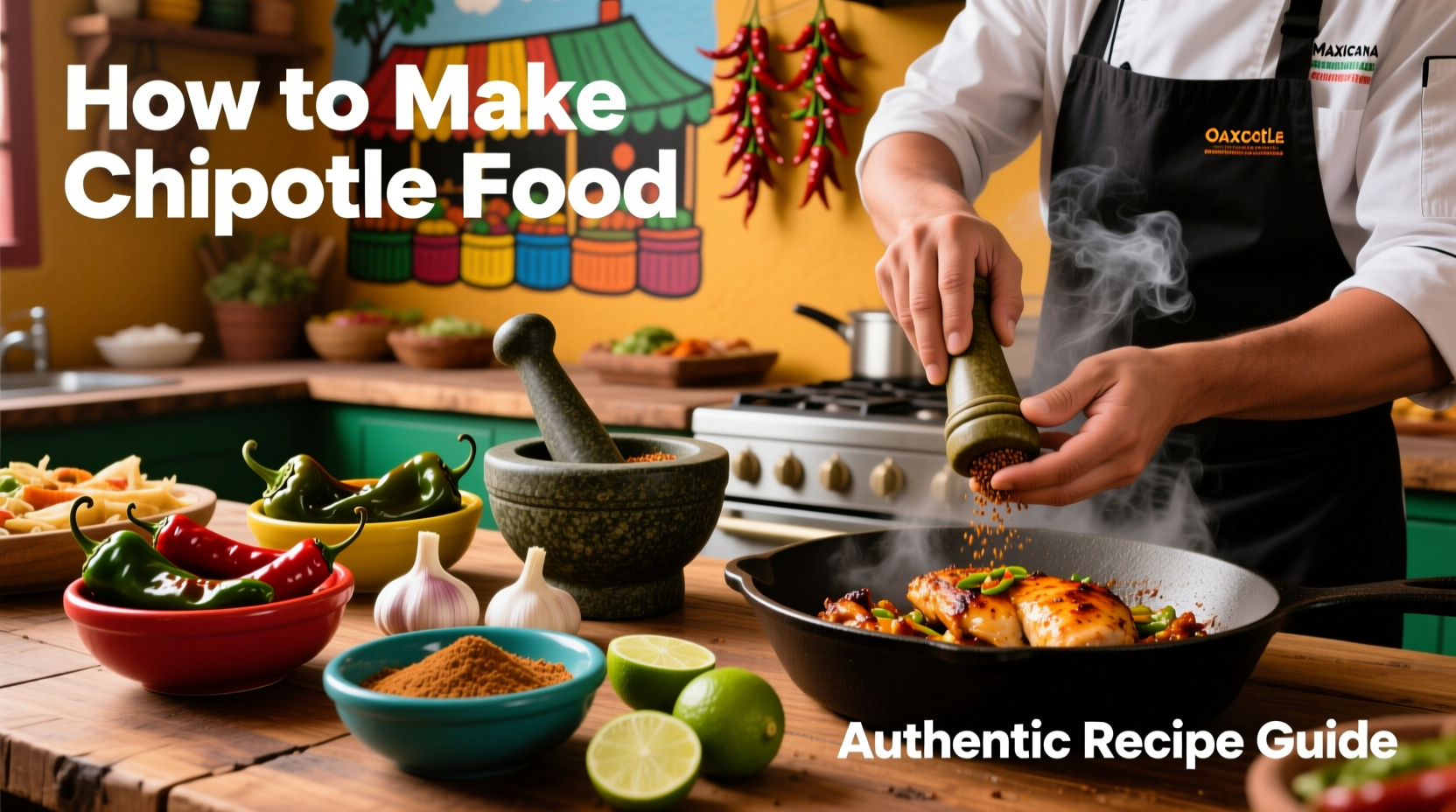Chipotle's popularity stems from its fresh, customizable Mexican-inspired bowls and burritos. While the restaurant chain maintains proprietary recipes, you can recreate remarkably similar dishes at home by understanding their core components and preparation methods. This comprehensive guide breaks down each element of Chipotle-style cooking with precise measurements, timing instructions, and professional techniques that home cooks can easily implement.
Understanding Chipotle's Food Philosophy
Before diving into recipes, it's essential to grasp Chipotle's culinary approach. The restaurant emphasizes "Food With Integrity"—using responsibly sourced ingredients with minimal processing. Their menu focuses on five key components that work in harmony:
- Freshly prepared bases (rice or lettuce)
- Slow-cooked beans
- Marinated proteins
- Vibrant salsas with varying heat levels
- Creamy guacamole
Unlike traditional Mexican cuisine, Chipotle simplifies preparation while maintaining bold flavors through strategic seasoning and cooking techniques rather than complex spice blends.
Essential Ingredients Comparison
| Chipotle Component | Home Equivalent | Critical Success Factor |
|---|---|---|
| Cilantro-Lime Rice | White rice with fresh lime juice & zest | Add lime AFTER cooking to preserve brightness |
| Barbacoa | Chuck roast with chipotle peppers in adobo | Slow cook for 3+ hours until shreddable |
| Sofritas | Firm tofu with tomato paste & spices | Press tofu thoroughly before cooking |
| Tomato Salsa | Fresh tomatoes, onion, cilantro, jalapeño | Chop ingredients uniformly for consistent texture |
This comparison shows how restaurant techniques translate to home kitchens. The critical success factors highlight where most home attempts fail—understanding these nuances separates adequate from authentic results.
Strategic Meal Planning Timeline
Successful Chipotle-style meals require proper sequencing. Follow this timeline for optimal results:
24 Hours Before: Marinate proteins (especially for carne asada)
3 Hours Before: Start beans and slow-cooked proteins
1 Hour Before: Prepare salsas and guacamole (store with plastic wrap directly on surface)
30 Minutes Before: Cook rice
15 Minutes Before: Warm tortillas or prepare lettuce bases
Assembly: Work from base to toppings for structural integrity

Core Component Recipes
Perfect Cilantro-Lime Rice
This foundational element makes or breaks your Chipotle experience. Restaurant kitchens use long-grain white rice, but proper technique matters more than specific varieties.
Ingredients:
- 2 cups long-grain white rice
- 3 cups water or broth
- 1½ tablespoons fresh lime juice (about 1 lime)
- 1 teaspoon lime zest
- ½ cup chopped fresh cilantro
- 1 teaspoon kosher salt
Method:
- Rinse rice under cold water until water runs clear
- Cook rice with water and salt using absorption method (simmer covered 18 minutes)
- Let rest 10 minutes off heat
- Fluff with fork, then fold in lime juice, zest, and cilantro
Pro Tip: Never add lime before cooking—heat destroys volatile citrus compounds, resulting in flat flavor.
Authentic Chipotle-Style Beans
Chipotle uses pinto beans with a proprietary seasoning blend. This home version captures the essence with accessible ingredients.
Ingredients:
- 2 cups dried pinto beans (or 4 cans low-sodium)
- 6 cups water or broth
- 2 teaspoons cumin
- 1 teaspoon dried oregano
- 3 cloves garlic, minced
- 1 bay leaf
- 1 tablespoon apple cider vinegar
Method:
- If using dried beans, soak overnight or quick-soak (boil 2 minutes, rest 1 hour)
- Cook beans with water, garlic, and bay leaf until tender (1.5-2 hours)
- Drain, reserving 1 cup cooking liquid
- Mash 10% of beans to create natural thickener
- Return to pot with spices and vinegar, adding reserved liquid as needed
- Cook 15 minutes to meld flavors
Restaurant-Quality Guacamole
The key to authentic guacamole is texture control and ingredient quality. Chipotle uses Hass avocados exclusively.
Ingredients:
- 3 ripe Hass avocados
- 1 lime, juiced
- ½ cup finely diced red onion
- 1 jalapeño, seeds removed, finely diced
- 2 tablespoons chopped cilantro
- ¼ teaspoon ground cumin
- Salt to taste
Method:
- Cut avocados in half, remove pits, and scoop flesh into bowl
- Add lime juice immediately to prevent browning
- Mash with fork to desired consistency (Chipotle prefers slightly chunky)
- Fold in remaining ingredients gently
- Press plastic wrap directly on surface to minimize oxidation
Assembly Techniques for Perfect Results
Chipotle's structural integrity comes from strategic layering. Follow this sequence:
- Base: Rice or lettuce (warm rice helps keep lettuce crisp)
- Beans: Spread evenly over base
- Protein: Place in center for bowls, along one side for burritos
- Salsas: Add before guacamole to create moisture barrier
- Guacamole: Critical for burrito cohesion
- Finishing: Sour cream and cheese last to prevent melting
For burritos, fold tortilla with bottom flap up first, then sides inward, and roll tightly. Wrap in foil for 2 minutes to set structure before serving.
Common Mistakes to Avoid
Based on culinary research from the USDA National Flavor Program, these errors undermine authenticity:
- Overmixing rice: Destroys individual grain texture
- Using pre-minced garlic: Lacks fresh enzymatic complexity
- Adding salt to beans during cooking: Toughens skins (add after cooking)
- Using unripe avocados: Hass avocados should yield slightly when gently squeezed
- Incorrect heat management: Proteins should be warm but not hot when assembling
Storage and Meal Prep Guidance
According to food safety guidelines from the FDA Food Code, properly stored components maintain quality:
- Rice: 5 days refrigerated (reheat with splash of water)
- Beans: 7 days refrigerated or 3 months frozen
- Proteins: 4 days refrigerated or 2 months frozen
- Salsas: 5 days refrigerated
- Guacamole: 24 hours maximum (even with lime)
For meal prep, store components separately and assemble fresh. The CDC Food Safety guidelines recommend keeping cold components below 40°F and hot components above 140°F until assembly.
Pro Tips for Restaurant-Quality Results
- Double toast spices: Toast whole spices before grinding, then briefly toast ground spices
- Layer citrus: Use both juice and zest for complex flavor dimension
- Control moisture: Drain beans and proteins thoroughly to prevent sogginess
- Temperature management: Warm proteins to 140°F—not boiling—to preserve texture
- Texture contrast: Keep some salsa ingredients finely diced, others chunky











 浙公网安备
33010002000092号
浙公网安备
33010002000092号 浙B2-20120091-4
浙B2-20120091-4